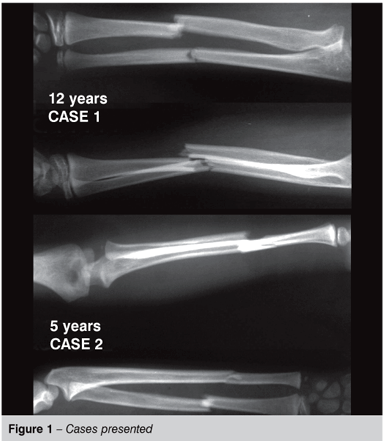OBJECTIVE: The treatment and the angular deviations tolerated in diaphyseal forearm fractures in children evoke divergent opinions in literature. In view of this controversy, we idealized this study to evaluate the preferred treatment methods for this injury, during the 39th Brazilian Congress on Orthopedics and Traumatology. METHODS: A total 759 questionnaires were answered (13% of total entrants). We addressed the general aspects of the study sample to obtain a profile of the orthopedic surgeons questioned. RESULTS: Two clinical subjects were presented, aged 12 (CASE 1) and 5 years old (CASE 2), along with radiographs depicting forearm diaphyseal fractures of these patients. Data was gathered and submitted to statistical analysis. The overall preferred treatment in CASE 1 was closed reduction and fixation with Kirschner wires (26%), while in case 2 it was closed reduction followed by plaster cast (46%). CONCLUSION: Among orthopedic surgeons less than 30 years old, the choice for less invasive treatments and greater acceptance of angular values prevailed in both cases. The traumatologists accepted lower angular values and tended towards more invasive treatments, particularly for CASE 2. On the other hand, the pediatric orthopedic surgeon prefers less invasive treatments and accepts greater angular deviations.
Treatment; Fracture; Forearm; Child







